You’ll want to choose Delft clay for jewelry casting because it captures intricate details better than sand casting while requiring minimal equipment and upfront investment. The clay’s fine-grain composition produces clean, professional-quality castings with sharp precision, and it’s completely reusable so you won’t waste materials on multiple attempts. You can cast various metals including brass and silver right at home, eliminating expensive outsourcing costs. Discover how this accessible method transforms your jewelry-making capabilities.
What Makes Delft Clay Casting Unique for Jewelry Making
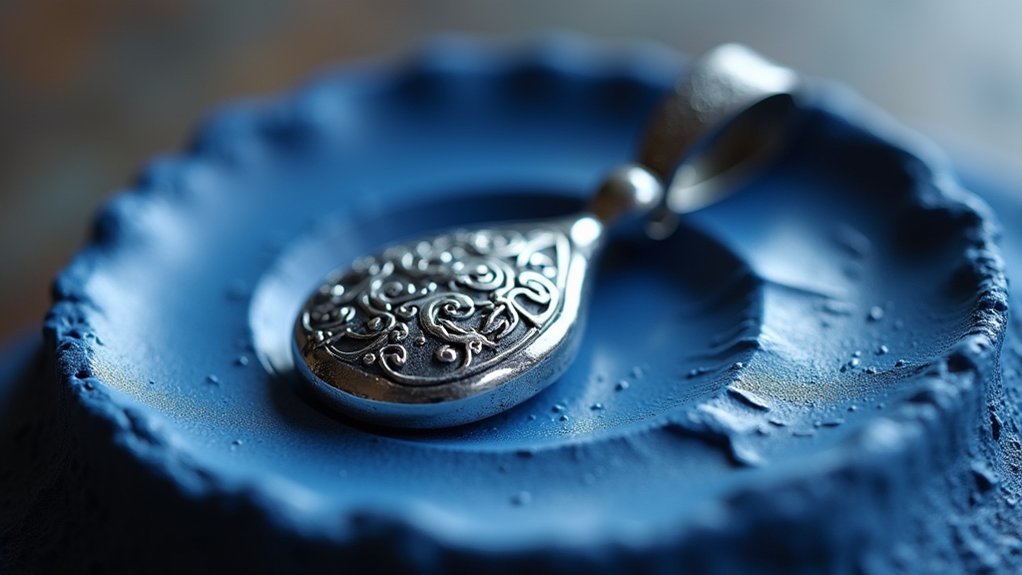
While traditional sand casting has dominated metalworking for centuries, Delft clay casting offers jewelry makers a rejuvenating accessible alternative that doesn’t sacrifice quality for convenience.
You’ll discover that this method’s unique clay composition captures intricate details better than standard sand casting, ensuring your jewelry designs translate beautifully into metal.
What sets Delft clay casting apart is its remarkable user-friendliness—you won’t need extensive equipment or complex setups to create professional results.
The clay’s reusable nature means you can experiment freely without worrying about wasting materials, and multiple casting attempts become cost-effective.
You’ll also appreciate its versatility with different metals, from brass to silver, giving you creative freedom to explore various materials for your unique jewelry pieces.
Cost-Effective Benefits of Using Delft Clay Over Traditional Methods
You’ll find Delft clay casting requires considerably less upfront investment than traditional methods, as you won’t need expensive centrifugal machines or vacuum equipment.
The clay itself can be reused multiple times, stretching your material budget further while maintaining consistent casting quality.
You’ll also cut down on outsourcing expenses since the straightforward process allows you to handle most casting work in-house rather than sending pieces to specialized facilities.
Lower Equipment Investment Required
Since traditional jewelry casting methods often demand expensive machinery and specialized equipment, Delft clay presents a revitalizing alternative that won’t break the bank.
You’ll find that this casting technique requires minimal tools, making it perfect for beginners who want quality results without massive upfront costs.
The beauty of Delft lies in its simplicity. You can start casting with basic equipment you likely already own:
- Simple heating sources – No need for expensive high-temperature furnaces
- Basic hand tools – Standard jewelry-making tools work perfectly
- Minimal workspace setup – Your kitchen table can become your casting station
At just £61.65 for a complete starter kit, you’re getting everything needed to begin your casting journey.
The reusable clay maximizes your investment, delivering multiple projects from one purchase.
Reusable Clay Material
Unlike traditional casting materials that crumble after one use, Delft clay transforms your jewelry-making economics through its remarkable reusability. You’ll find this unique composition prevents drying out, enabling countless casting sessions without replacement costs. This casting system eliminates expensive rubber or silicon molds while accommodating wax patterns efficiently.
| Traditional Methods | Delft Clay |
|---|---|
| Single-use molds | Multiple casting sessions |
| High material replacement costs | One-time investment |
| Time-intensive mold preparation | Quick setup and cleanup |
| Limited pattern versatility | Accommodates various wax designs |
Your initial investment maximizes value through versatility and longevity. The quick setup process saves time and resources on preparation and maintenance. You’ll produce diverse jewelry pieces efficiently while reducing overall material costs compared to disposable alternatives.
Reduced Outsourcing Expenses
When you bring jewelry casting in-house with Delft clay, you’ll eliminate the hefty fees typically paid to professional casting services.
You’ll save substantial money by creating your designs yourself rather than outsourcing to expensive professionals.
Consider the financial advantages you’ll gain:
- No more labor costs – Skip the hourly rates charged by casting specialists and handle everything yourself.
- Immediate production control – Start casting rings and other pieces whenever inspiration strikes, without booking appointments or waiting weeks for completion.
- Complete creative ownership – Maintain full control over your designs without sharing profits with external services.
The Delft Clay Casting Kit at £61.65 pays for itself quickly compared to outsourcing even a few pieces.
You’ll recoup this investment after just several casting projects.
Detail and Precision Capabilities in Delft Clay Casting
The fine-grain composition of Delft clay sets it apart as an exceptional medium for capturing intricate details in jewelry casting.
You’ll achieve fine detail that surpasses traditional sand casting methods, making it perfect for creating complex rings, earrings, and pendants. The clay’s composition enables quick mold creation while capturing sharp details from your metal models.
You’ll produce clean castings with minimal pickling required, greatly reducing finishing work on detailed designs. This precision makes Delft clay ideal for solid wax models, allowing you to create complex shapes without worrying about breakage risks associated with traditional wax casting.
While limitations exist, you’ll find Delft clay provides an excellent entry point for exploring jewelry making with unprecedented detail and precision in your designs.
Reusability and Environmental Advantages of Delft Clay
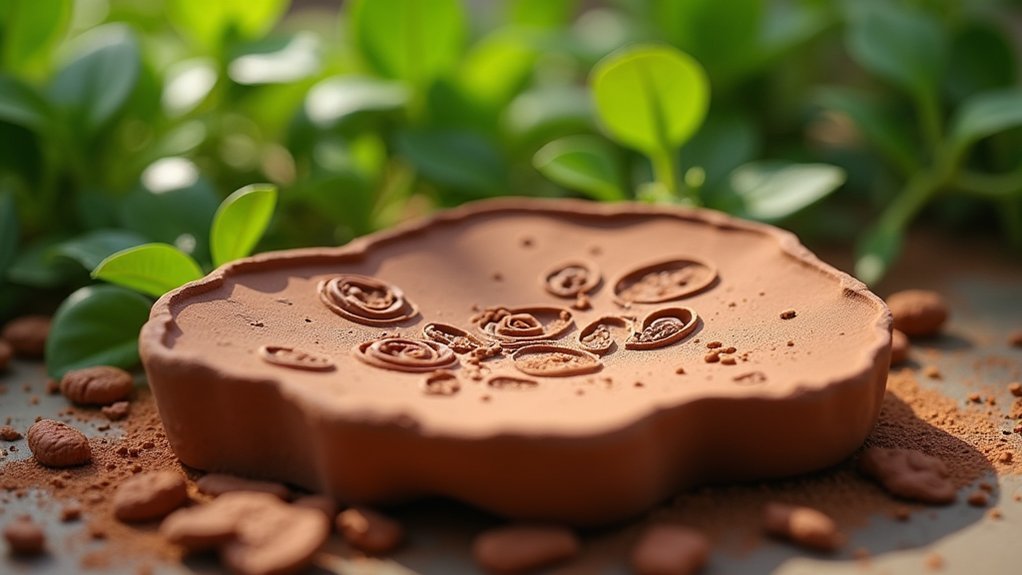
Beyond its exceptional casting capabilities, Delft clay offers significant environmental benefits that make it an increasingly attractive choice for conscious jewelry makers.
You’ll discover that this remarkable material revolutionizes sustainable casting practices through its unique reusable properties. Unlike traditional methods requiring fresh materials for each wax model casting, Delft clay’s special composition prevents drying, allowing unlimited reuse without degradation. This dramatically reduces waste while maintaining consistent quality across multiple projects.
Key environmental advantages include:
- Minimal equipment requirements – reducing resource consumption compared to complex casting systems
- In-house production capabilities – eliminating transportation emissions from outsourcing
- Metal recycling optimization – efficiently utilizing off-cuts and scraps for new pieces
You’re not just choosing superior casting quality; you’re embracing sustainable jewelry making that reduces environmental impact while maintaining professional results.
Equipment Requirements and Setup for Delft Clay Casting
Making this sustainable casting method work requires surprisingly few tools, which directly supports its environmental advantages. You’ll need Delft clay, a heat source for melting metal, and basic mold creation tools. This accessibility makes it perfect for beginners entering jewelry casting.
| Essential Equipment | Purpose |
|---|---|
| Delft clay | Primary mold material |
| Heat source | Metal melting |
| Carving wax (hard) | Model creation |
| Spirit level | Ring alignment |
| Basic hand tools | Mold preparation |
Your setup process involves packing clay around your carving wax model, ensuring your pouring gate measures at least 5mm diameter for proper metal flow. Use a spirit level to check ring alignment—this step’s critical for consistent pours. Don’t forget strategically placed vent holes for air escape, preventing incomplete molds.
Common Applications and Project Types for Delft Clay
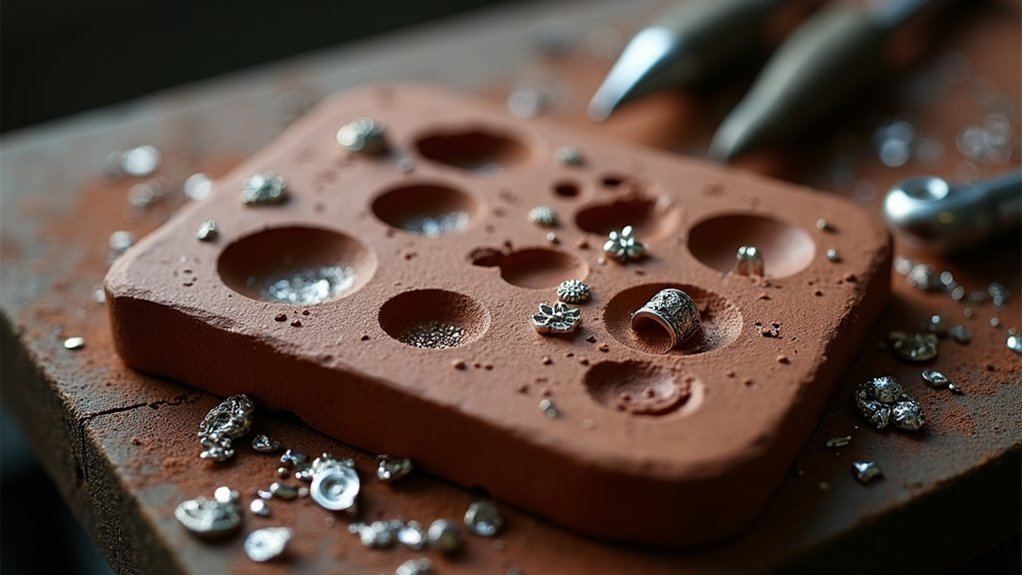
While jewelry remains Delft clay’s primary application, you’ll discover this versatile casting method opens doors to numerous creative projects beyond traditional rings and pendants.
Delft clay casting extends far beyond jewelry making, unlocking creative possibilities for functional items and artistic projects.
You can craft an impressive range of jewelry pieces including bracelets and earrings with intricate detail and professional finishing.
Beyond personal adornment, you’ll find Delft clay excels in functional applications:
- Timepiece restoration – Cast precise clock cases, bezels, and decorative watch elements
- Antique hardware reproduction – Create authentic door pulls and handles for furniture restoration
- Commemorative items – Design custom badges, medals, and plaques for special occasions
The Delft Clay Standard Kit’s 2kg clay supply and 60mm rings provide everything you need to explore these diverse project types, making it ideal for beginners expanding their metalworking repertoire.
Troubleshooting Tips for Successful Delft Clay Casting Results
You’ll encounter various challenges when casting with Delft clay, but most issues stem from three primary areas that can make or break your results.
Common casting failures often trace back to inadequate mold preparation, while temperature control problems can cause incomplete pours or surface defects in your jewelry pieces.
Understanding these core problem areas and their solutions will help you troubleshoot issues quickly and achieve consistent, professional-quality castings.
Common Casting Failures
Even experienced metalworkers encounter casting failures when working with Delft clay, but understanding common problems helps you troubleshoot issues and achieve consistent results.
Incomplete molds frequently occur when air can’t escape properly, leaving sections unfilled or poorly detailed.
Common casting failures you’ll encounter include:
- Insufficient venting – Air trapped in the mold creates incomplete fills, especially in detailed areas where metal flow becomes restricted.
- Poor metal temperature control – Cool metal won’t flow effectively through narrow passages, resulting in partial casts with missing elements.
- Inadequate sprue sizing – Small sprues and insufficient metal volume prevent proper fills and detail capture.
Position air vents strategically at the top of the mould opposite your pouring gate.
Start with thicker, simpler designs before attempting intricate pieces, and maintain detailed casting logs to identify successful techniques.
Temperature Control Issues
Temperature control stands as the most critical factor determining your casting success with Delft clay. You’ll need to maintain consistent metal temperature throughout the entire pouring process to prevent premature solidification that causes incomplete fills.
Keep your metal continuously heated right up until pouring begins. Don’t let it cool between melting and casting. When you’re ready to pour, consider casting through a flame to maintain ideal temperature during the actual pour. This technique helps counteract rapid cooling that occurs when hot metal contacts the clay mold.
Your Delft casting results improve dramatically when you maintain proper heat management. Use larger sprues and guarantee adequate metal volume to compensate for any temperature loss.
Strategic vent hole placement opposite your pouring gate also helps maintain proper flow dynamics during temperature-sensitive casting moments.
Mold Preparation Problems
Proper mold preparation determines whether your perfectly heated metal will actually fill your design completely.
You’ll face incomplete fills and blocked passages if you don’t address key preparation elements systematically.
Start with thicker, simpler designs for your initial attempts since they’re more forgiving than intricate pieces.
These fundamental steps will prevent most preparation problems:
- Ensure your pouring gate measures at least 5mm diameter – this prevents restricted metal flow that creates incomplete molds
- Pack pouring gates and vent holes thoroughly – removing all debris keeps metal passages clear during casting
- Position vent holes strategically at thinner model sections opposite your pouring gate – proper air escape prevents trapped gases
Keep detailed logs of your casting attempts and outcomes.
This documentation helps you identify recurring preparation issues and refine your techniques over time.
Frequently Asked Questions
What Is an Alternative to Delft Clay?
You can use lost-wax casting for intricate designs, investment casting for high precision, sand casting for simpler pieces, cuttlefish casting for unique textures, or centrifugal casting for detailed work.
What Is Delft Clay Casting?
You’ll use a reusable clay composition to create molds for casting jewelry pieces. You pack the clay around your model, pour molten metal into the mold, and capture intricate details quickly and cost-effectively.
Can You Cast Wax in Delft Clay?
You can’t cast wax directly in Delft clay since it’s designed for metal casting. Instead, you’ll use wax models to create impressions in the clay, then cast metal into those molds.
Does Delft Clay Dry Out?
No, Delft clay doesn’t dry out like traditional clay. Its special organic binder maintains moisture content, so you can reuse it multiple times without losing its moldable properties when stored properly.
In Summary
You’ll find Delft clay casting transforms your jewelry-making process with its affordability, reusability, and impressive detail capabilities. You’re getting professional results without expensive equipment or complex setups. You can create intricate pieces, experiment freely, and reduce waste while maintaining precision that rivals traditional methods. Whether you’re a beginner or experienced jeweler, you’ll appreciate how Delft clay simplifies casting while delivering consistent, high-quality results for all your creative projects.



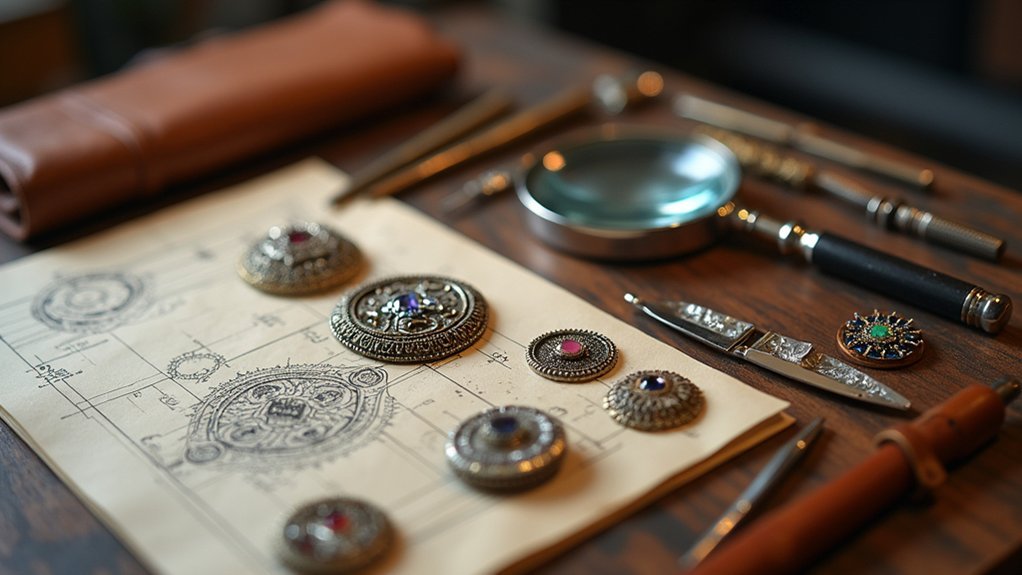
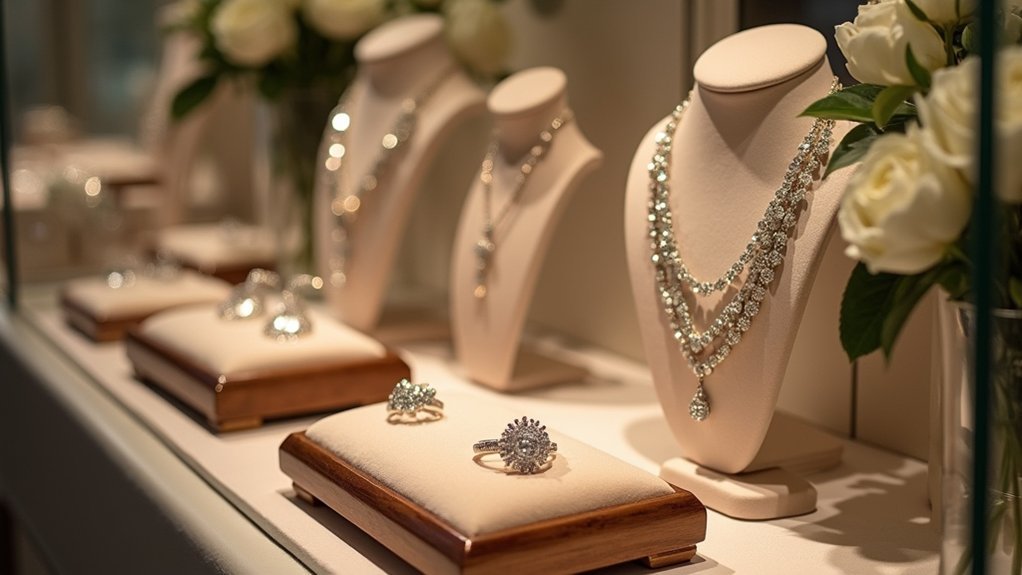
Leave a Reply